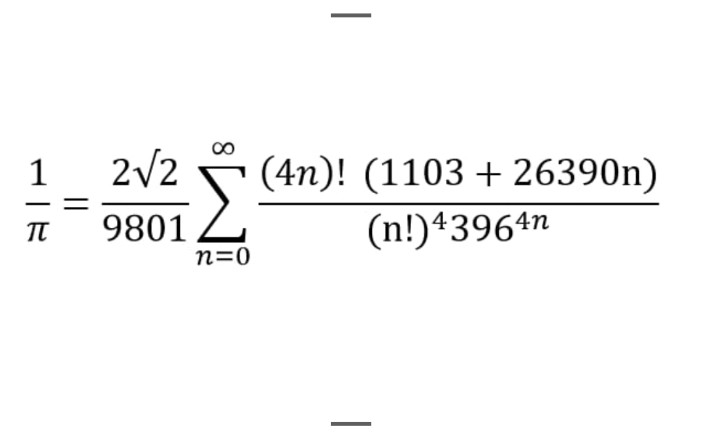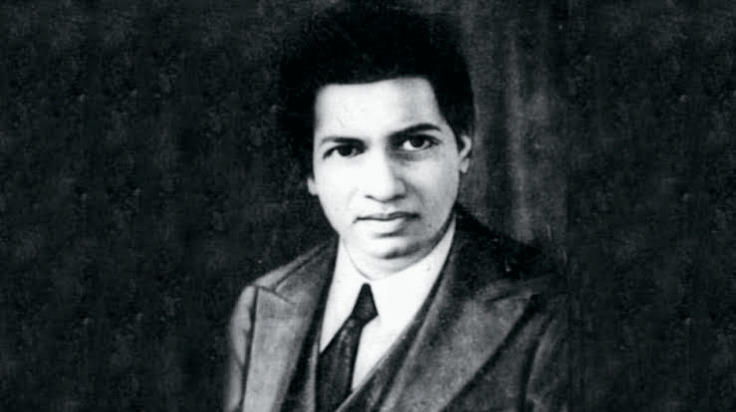Srinivasa Ramanujan is one of the greatest mathematicians in history, he was born on December 22, 1887, to a poor Hindu Brahmin family in Erode in the state of Tamil Nadu in South India. Ramanujan contributed significantly to mathematical analysis, number theory, the derivation of phi’s value, and infinite numbers, all before the age of 32. His theorems, questions, solutions, and famous notebooks have inspired researchers since he died in 1920.
At the age of 5, Ramanujan entered primary school in Kumbakonam and suffered a minor attack of smallpox, which left several permanent sores on his face. Constantly changing schools before entering secondary school in Kumbakonam in early 1898 Ramanujan was considered too precocious by the teachers and the school. In 1902, he discovered how to solve equations of the third power (cubic) and the method of solving equations of the fourth power (quartic). The following year, he tried to solve the fifth power equation (quintic) but failed because he never knew that quintic could not be solved using radicals.
While still studying in high school, Ramanujan read G.S. Carr’s book Synopsis of Elementary Results in Pure Mathematics. The book’s simple writing made it easy for him to learn. This later had an impact on him. The way the book was written gave him a patron that writing the right book should have a mission: “Easy to learn by its readers” and the clear writing of his mathematical arguments would later accompany all his papers and manuscripts.
In 1906, Ramanujan enrolled at Pachaiyappa College in Madras with hopes of passing the initial test and ultimately attending the University of Madras. Though he was accepted into the College, he fell ill after only three months. Following his recovery and taking the entrance test, he passed only in math, failing in other subjects. His inability to enter the university led him to develop his mathematical concepts without aid or knowledge from others, except for G.S. Carr’s book. In 1908, Ramanujan began studying fractions and divergent series; however, his studies were cut short when he fell ill and required surgery the following year. In 1909, he married a 9-year-old girl named Janaki, but they could not live together until she turned 12.
Ramanujan received his first scholarship at Government College in Kumbakonam and later transferred to other universities due to his strong passion for mathematics. Between 1912 and 1913, Ramanujan submitted examples of his self-derived theorems to Cambridge University. G.H. Hardy was the only one capable of acknowledging Ramanujan’s brilliant work. Consequently, he extended an invitation for Ramanujan to come work at Cambridge. Subsequently, Ramanujan’s research paper on composite numbers was published in the Journal of the London Mathematical Society, earning him a BA degree in 1916 (which was later upgraded to a PhD). In 1917, Ramanujan became a member of the London Mathematical Society and then a Fellow of the Royal Society in 1918 due to his contributions to elliptic functions and number theory.
However, due to health problems, Ramanujan returned to Kumbakonam, India in 1919. He eventually passed away in his hometown at the age of 32. Ramanujan’s notebooks, which contain unpublished theorems, continue to be studied by mathematicians. GN Watson, the Mason Professor of Pure Mathematics at the University of Birmingham from 1918 to 1951, published over 30 papers under two titles: Theorems Stated by Ramanujan and Theorems in Algebraic Numbers. Hardy bequeathed Watson a significant volume of Ramanujan manuscripts, including some written in Ramanujan’s final year in India before his death.
Ramanujan Contribution
1) Most Notable Achievement is the discovery of Ramanujan’s Phi Series Formula.
Srinivasa Ramanujan developed innovative sequences to calculate π. Nowadays, modern π calculators don’t exclusively rely on iterative algorithms. Recently discovered infinite series from the 1980s and 1990s are just as fast in convergence as iterative algorithms, while being simpler and requiring less memory. The discovery of speedy iterative algorithms succeeded the revelation of rapid convergent series in 1914, as Indian mathematician Srinivasa Ramanujan introduced numerous innovative equations for π that rapidly converged. Here is one of his formulas, which is based on modular equations:

This series converges at a faster rate than many other arctan sequences, including Machin’s formula. It has since been utilized by contemporary mathematicians when calculating the numerical value of π. The value of phi was discovered by famous mathematicians, namely Johann Lambert and Euler. However , the phi series formula by Ramanujan made a major contribution for mathematicians to seeking to determine the value of π to an insurmountable limit.
2) Partition Ramanujan’s
Furthermore, in 1920, a year before his death, Ramanujan shared his views on the subject of partitioning. The idea of partitioning is straightforward. Partition refers to the number of possible ways a number can be split. For instance, the number 5 can be split into seven different parts:
5
1 + 1 + 1 + 1 + 1
1 + 1 + 1 + 2
1 + 1 + 3
1 + 2 + 2
1 + 4
2 + 3
The unrestricted partition function, p(n), is a much-studied function in additive number theory which also has uses in many other areas. For example the above function is referred to as P(5) = 7. Similarly, there are 11 ways to split the number 6, so p(6) = 11. As the number to be partitioned increases, so do the available partitioning options. For instance, 100 can be partitioned in nearly 200 million ways, which is equivalent to p(100) = 190,569,292. The partition of 1000 is a number with 32 digits or tens of trillions of trillions. However, mathematicians do not currently possess the formula to solve this problem. For centuries, scholars searched for a pattern, but Ramanujan was the one who ultimately discovered it. According to his claim, starting with 9 and increasing it by five results in a partition divisible by five.
For instance,
P(9) = 30,
P(9+5) = p(14) = 135,
P(14 +5) = p(19) = 490,
P(19+5) = p(24) = 1,575.
The author asserts that a recurring pattern will continue infinitely.
This same pattern also manifests when replacing 5 with 7 or 11, as well as any other prime number or power of 5, 7, or 11. For instance, an unending interval of 5^3 must exist, within which all p(n) are divisible by 125.Additionally, Ramanujan noted the following: There is no identifiable pattern for larger primes. In simpler terms, no sequence p(n) can be found that is entirely divisible by 13, 17, 19, and so forth.
References
- Guillera, J. (2018). A method for proving Ramanujan series for 1/π. Zaragoza: Research Gate.
- Labh, S. (2022, December 18). Ramanujan’s Magnificent Formula for Pi: 9801/(1103√8)=π. Retrieved December 25, 2023, from Cantor’s Paradise: https://www.cantorsparadise.com/ramanujans-magnificent-formula-for-pi-9801-1103-8-%CF%80-22fd7197d650
- Lim, A. (2018, December 26). Biography of Srinivasa Ramanujan, Mathematical Genius. Retrieved December 25, 2023, from Thought.co: https://www.thoughtco.com/srinivasa-ramanujan-4571004
- Singh, P. (2012, March 19). Modular Equations and Approximations to π(PI): Part 1. . Retrieved December 25, 2023, from Paramanands Blog: https://paramanands.blogspot.com/2012/03/modular-equations-and-approximations-to-pi-part-1.html?m=0

